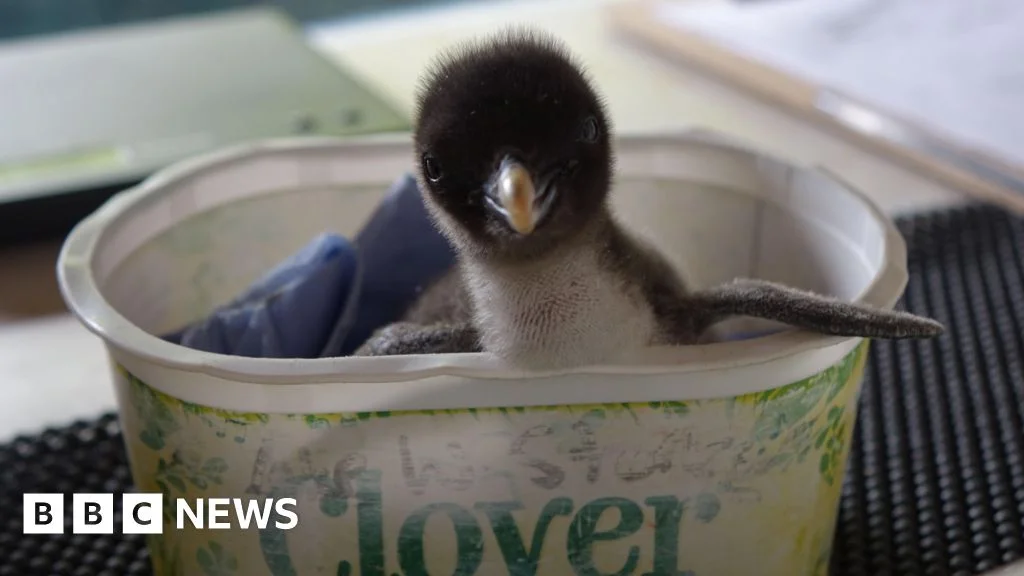
Endangered Rockhopper Penguin Chick Thrives With Human Care At Whipsnade Zoo
At Whipsnade Zoo, a heartwarming story unfolds as dedicated zookeepers have successfully hand-reared an endangered northern rockhopper penguin chick named Noisy. This endeavor is part of a broader conservation effort aimed at stabilizing the dwindling population of rockhopper penguins, which has tragically declined by over 57% in the last 27 years.

In an innovative approach taken by zookeepers, Noisy was placed in an incubator after hatching, whilst his parents were given a dummy egg—a clever tactic that allowed the penguin colony to continue practicing their nesting behaviors without worry. Tim Savage, the section manager of birds at Whipsnade Zoo, emphasized the significance of contributing to the European breeding programme: "Creating a healthy and genetically diverse backup population in conservation zoos is vital." As one of only seven zoos in Europe caring for this rare subspecies, the facility has made it a priority to monitor Noisy round the clock.
Noisy is fed a special "milkshake" that mimics the regurgitated food penguin parents naturally provide. This mixture, blended from sprats, vitamins, and saline solution, plays a crucial role in ensuring Noisy’s health and growth. The commitment of the keepers reflects the urgent need for conservation efforts in light of the declining wild populations.

Rockhopper penguins are known for their distinctive spiky yellow eyebrows and striking black feathers, giving them a unique appearance that sets them apart in the avian world. Indigenous to the South Atlantic and Indian Ocean regions, these remarkable birds have been seeing their populations dwindle, prompting the urgent conservation measures we see today.
As Noisy reaches two months old, keepers will determine the chick's sex through DNA analysis, marking another step in the ongoing effort to nurture and protect this vulnerable species. The commitment shown by Whipsnade Zoo highlights the importance of both individual and collective actions in wildlife conservation.
Will conservation programs like the one at Whipsnade Zoo succeed in reviving the population of such endangered species? As we look to the future, the efforts of these dedicated zookeepers shine as a beacon of hope. What are your thoughts on the role of zoos in wildlife conservation? Share your comments below!